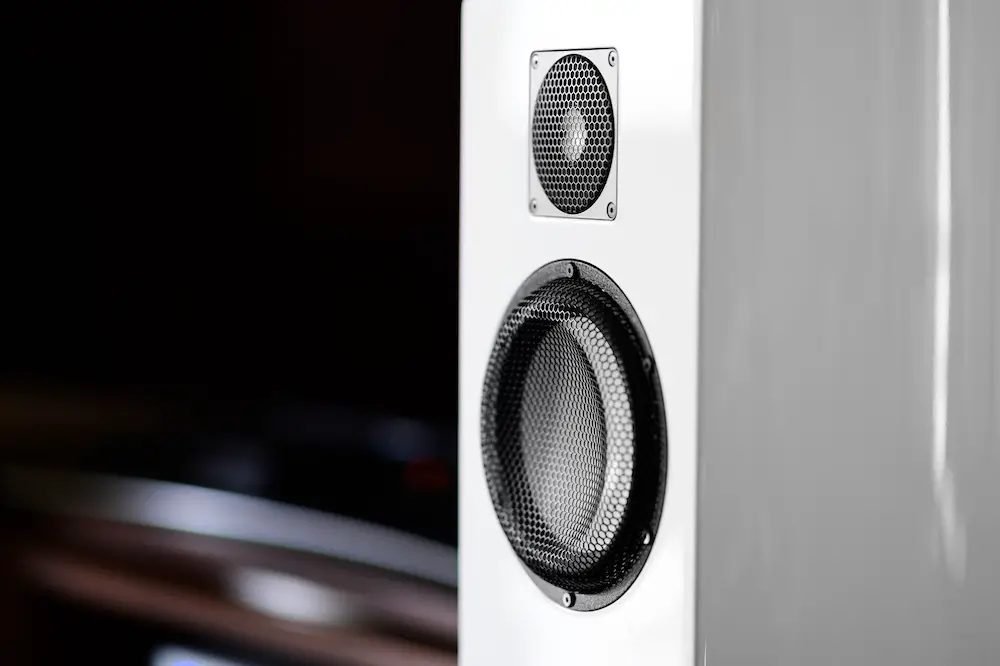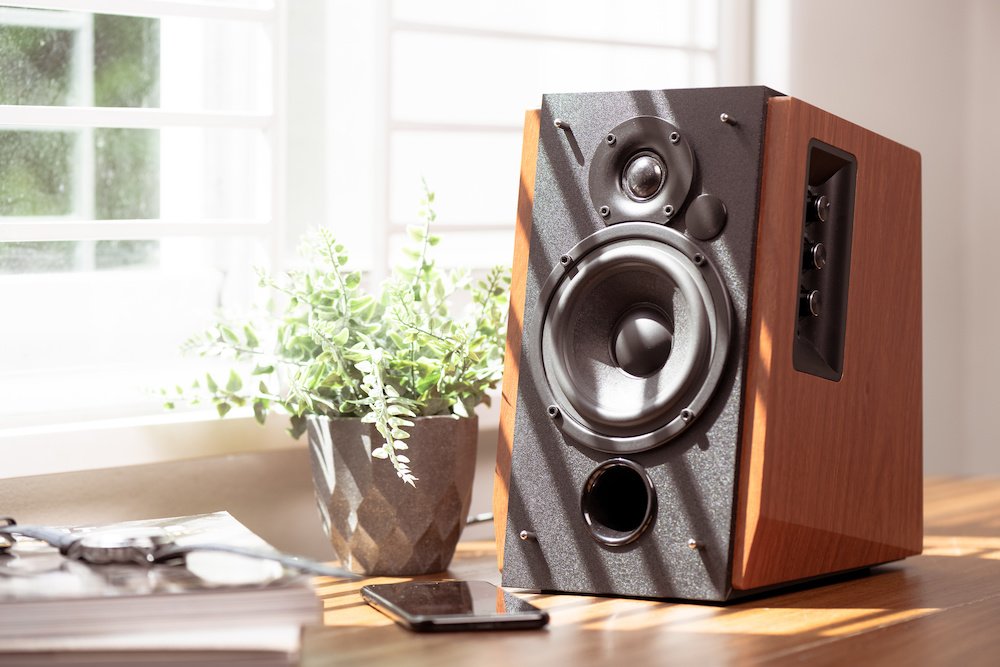An excellent pair of speakers from Polk Audio or other brands impact how you enjoy your music or the movies you watch.
Audio enthusiasts would go to all lengths to create their ideal speaker setup and achieve the tonal balance they want.
Others combine different kinds of speakers with floor-standing speakers to achieve a fuller sound and increased level of clarity.
That said, many would love a powered bookshelf speaker, like the Borea BR03 from the French speaker manufacturer, connected to their home theater system or music player.
What are bookshelf speakers? Do you place them on actual bookshelves, literally?
- What Are Bookshelf Speakers?
- How Did They Come To Be?
- What Makes Bookshelf Speakers Better?
- Are There Downsides To Bookshelf Speakers?
- What Is Audio Spectrum?
- What Do You Often Use Bookshelf Speakers For?
- Basic Speaker Specs To Remember
- How To Set up Bookshelf Speakers
- Maximize Listening Pleasure With Bookshelf Speakers
What Are Bookshelf Speakers?
Bookshelf speakers, as the name implies, are typically set up on any elevated platform, like a shelf or a table.
They are designed and engineered to generate sound in small to moderately-sized areas, hence, the need for elevation.
You can use bookshelf speakers in different types of audio settings. Whatever setup you choose, ensure it will help you appreciate the sound better.
When making these high-quality bookshelf speakers, those in the speaker business focus on providing their listeners with enjoyment and a huge sense of scale.
With the right frequency range, they ensure these speakers cater to specific needs and match the listeners’ tastes.
Each brand has its distinct flavor or color when making bookshelf speakers in the stereo speaker market, depending on the user’s intended purpose.
You can also choose your preferred superb option between active and passive bookshelf speakers.
A passive speaker requires a connection to an external amplifier to work, while an active or powered version comes complete with one.
How Did They Come To Be?
Premium home loudspeakers during the ‘50s and ‘60s were floor-standing with large speaker enclosures, providing the meatiest sound.
On the other hand, low-priced, small speaker cabinets are known for having low audio quality during that era.
That said, HiFi enthusiasts in small apartments asked for smaller speakers due to a lack of space.
As a result, manufacturers started producing compact premium speakers with bassy sound, selling at higher prices.
Historically, the credits for inventing the bookshelf speaker were given to Acoustic Research and its innovation called the sealed box.
Through the years, other manufacturers adopted the bookshelf speaker concept, making technical improvements from the ‘90s and beyond.
From then on, manufacturers started mass producing affordable, premium-quality bookshelf speakers worthy of adding to any setup.
What Makes Bookshelf Speakers Better?
If you are still unsure about whether to get bookshelf speakers, check out the following advantages that could help you make up your mind:
Affordable Prices
We all know that floor-standing speakers offer better sound quality and performance than bookshelf models.
However, the latter is more affordable. Thus, you can enjoy an improved sound quality for a more acceptable price.
Easily Upgradeable
With their mature performance, you can level up your home theater or surround sound system by adding several bookshelf speakers.
You can use them as the front, height, and surround channels, while the subwoofer covers the low frequency.
Ideal for Small Rooms
These compact bookshelf speakers are designed for small rooms, so those who want good sound quality can enjoy their optimal performance.
They are the perfect solution for music lovers who lack space for more prominent speakers. Also, the small dimension of these units makes them more portable.
Flexible Placement Options
Bookshelf speakers offer more flexible placement options than other models.
Because of their size, you can arrange them in various ways and set them up in different places.

Are There Downsides To Bookshelf Speakers?
Like all other things, bookshelf speakers are not perfect. No matter how many benefits you can count, there will always be drawbacks, such as:
Lacking in Bass
Bookshelf speakers provide an excellent mid-range frequency response. However, they typically miss bass with lesser audio depth.
Limited Volume Level
Since bookshelf speakers are designed for small spaces, they have limited volume. This type of speaker is not for you if you like listening to loud music.
Weak Low and High Range
Technically, most bookshelf speakers are designed to add to a more extensive home theater system.
For this reason, they are great for providing bi-directional and mid-range sound but weak in other aspects.
What Is Audio Spectrum?
What are these ranges that we are talking about anyway? The sounds we hear can be divided into these different ranges or frequencies.
Most people don’t give much attention to the different sounds they hear daily. Thus, we will look into these audio frequencies to try and understand them better.
1. Low Range ( 20Hz – 200Hz )
The low range is the spectrum where you hear the most melancholy audio tone; others use it to form a base.
Many are excited about this range and its numerous reproduction and recording technologies advancement.
After all, the bass is crucial in changing the song’s balance and making it sound whole.
2. Lower Mid-Range ( 200Hz – 1000Hz )
If you have a lower-midrange speaker, you will hear the sound of a bass guitar, mid-woodwinds, and other brass instruments more.
In addition, the sound of a cello and the voice of a male singer are other examples of tones belonging to the lower mid-range.
3. Mid-Range/Higher Mid-Range ( 1000Hz – 5000Hz )
This range frequency is the most distinct and detectable in the audio spectrum.
It is where you will hear guitar sounds and vocals, adding detail and clarity to the music. This range gives you an engaging performance and listening experience.
Also, your ears tend to be most sensitive in the higher mid-range. Consonants tend to sound clearer in this range because of the ear’s design and evolution.
4. High Range ( 5000Hz and above )
The high frequency, or treble as it is sometimes called, is the sharp end of the spectrum, cutting across other ranges.
This range can add brilliance and high-end clarity to any music. Some examples of this frequency are bells, flutes, and whistles.
Even vocalists belong to the high range frequency because they reach high notes when singing.
What Do You Often Use Bookshelf Speakers For?
Generally, you will find these bookshelf speakers commonly used indoors, not only for safety but practicality, too.
Here are some of the most common uses for bookshelf speakers:
Home Studio
People love using bookshelf speakers in their home studios because of their effectiveness and the fact that they don’t take up too much space.
You only need to connect the system to your choice of speakers and set them up on a shelf or a table.
Home Theater System
You can use these brilliant performers for your home theater system setup as a stand-alone unit or as an addition to your existing design.
Typically, a home theater setup requires at least five speakers, including bookshelf and satellite speakers.
These kinds of speakers’ simple and compact design can easily blend with the setup and its surroundings.
Record Player Setup
Maybe you have seen various record player setups and noticed a pair of stand-mount speakers beside them.
Not only do these five-star performers sound great, but they also provide a nostalgic feel to the overall aesthetic of the setup.
Basic Speaker Specs To Remember
Before buying a pair of bookshelf speakers, it’s crucial to do some research to understand their specifications.
Since most specs use technical terms, here are the three most important aspects of a bookshelf speaker you need to look out for:
Speaker Drivers
An introductory bookshelf speaker uses two drivers. Tweeters produce high-frequency sounds, while woofers create bass.
For this reason, getting a model with a third driver for the mid-range frequency to create a full-range sound is best.
Hertz
This feature is distinct for the bass. You will get a heavier bass sound if you have a low hertz number.
Watts
A high wattage reading can produce greater output, meaning you will have a louder speaker.
That said, ensure that the watts on your bookshelf speaker match that on your amplifier to prevent sound distortion.
How To Set up Bookshelf Speakers
How you arrange your bookshelf speakers can make a lot of difference to these musical performers’ sound quality.
It is not just about placing them on a shell or top of a table. What’s more important is how they are positioned in their designated spot.
Check out the following tips on speaker positioning so that you can get the most out of these units:
1. Check the Vibration
Try to monitor the vibrations of your bookshelf speakers when placed on a spot. Ensure you set them up on a stable platform to eliminate sound distortion.
You can also use decoupling pads to minimize, if not eliminate, the vibrations on these audio products.
2. Clock Hand Guide
One unwritten rule you can follow is using the clock hands as your guide when setting up bookshelf speakers.
If you are in front of your setup, place the left speaker at 10 o’clock while the other unit at 2 o’clock.
It is a favorable position that will give you excellent sound quality around the room. Additionally, ensure that the speakers are at ear level to increase their resonance further.
3. Space Is Essential
When we think of bookshelves, we envision cramped spaces where things are squeezed together in an attempt to fit everything.
If you place your speakers in that position, you will not get a decent sound out of them. You can clear the space around them to resolve this issue and remove interruptions.
Mounting your bookshelf speaker on the wall is another possible option to get more resonance from your unit.
4. Speaker Stand Option
Speaker stands are excellent alternatives to these units and help magnify the sound, similar to larger speakers.
These freestanding holders will place your speakers at ear level, allowing a more balanced sound distribution around the room.
Maximize Listening Pleasure With Bookshelf Speakers
What are bookshelf speakers? One way of enhancing your home speaker system is by adding a better-sounding pair of bookshelf speakers.
It does not matter what your purpose is; having one will change everything.
More importantly, you don’t have to spend too much cash on five-star speakers to improve your listening experience. Even affordable bookshelf speakers will do the trick.
These compact units are loud enough to fill the room with your favorite songs or let you enjoy the detailed sound of a movie.
With all the hundreds of products on the market, you will find budget bookshelf speakers that suit your needs.
Check out some buying guides for bookshelf speakers to ensure an amazing listening experience.

